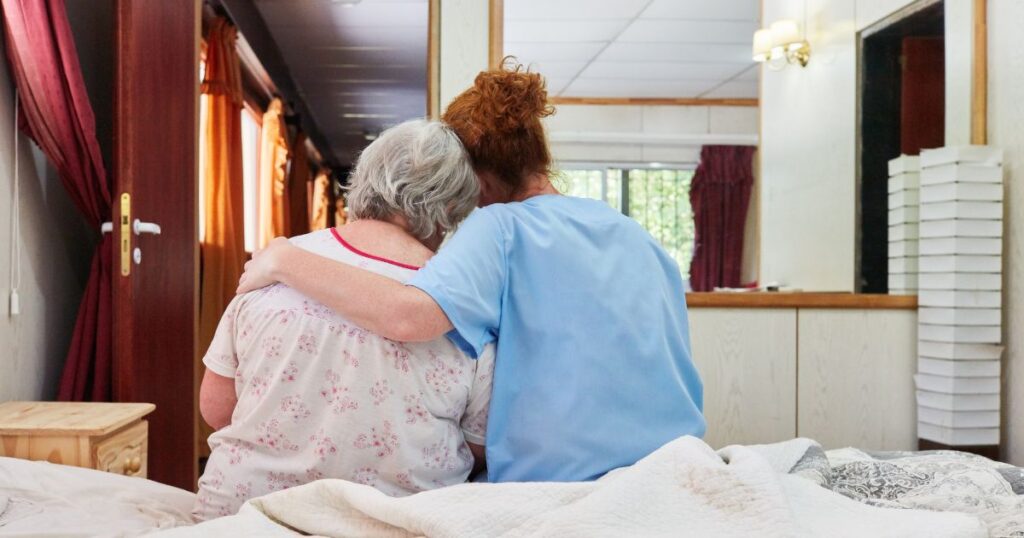AI and Human Intelligence (AI+HI™): A Powerful Combination for Senior Safety

In today’s aging society, ensuring the safety and well-being of seniors, especially those living in senior care facilities, has become a paramount concern. Advances in technology have ushered in innovative solutions, among which the integration of Artificial Intelligence (AI) with Human Intelligence™ in monitoring systems stands out. These hybrid systems, exemplified by virtual nurse monitoring platforms, combine the precision of technology with the irreplaceable touch of human care, creating a robust framework for senior safety. This article explores how combining AI and Human Intelligence™ forms a powerful alliance for safeguarding our elderly population, focusing on virtual nurse monitoring, fall prevention technology, and senior living monitoring systems.
The Evolution of Senior Living Monitoring Systems
Senior living monitoring systems have evolved significantly over the years, shifting from basic alarm systems to sophisticated networks incorporating AI and Human Intervention™. The goal remains constant: to enhance the safety and quality of life for seniors. Modern systems like virtual nurse monitoring utilize a combination of sensors, cameras, and software algorithms to keep a watchful eye on seniors, ensuring help is on the way when needed.
Systems like those offered by EyeWatch LIVE™ are designed to detect falls, track movement patterns, and recognize signs of distress or discomfort. Combining AI camera technology with real-time monitoring by trained nurses, they provide caregivers with a continuous stream of data, enabling them to respond quickly to potential emergencies and better understand the day-to-day needs and habits of the seniors they care for. This technology also plays a crucial role in ensuring the safety of seniors, especially those with conditions like dementia, who may be prone to wandering or other risky behaviors.
Harnessing AI for Fall Prevention
One of the most critical applications of AI in senior care is in fall prevention technology. Falls are a leading cause of injury among the elderly, and the consequences can be severe, ranging from physical injuries to significant declines in quality of life. AI-powered fall prevention technologies work by constantly monitoring the environment and the senior’s activities using motion detection systems.
These systems are designed to detect unusual patterns such as a sudden stop in movement, a deviation from typical motion paths, or even subtle changes that may indicate increased fall risk due to medical complications. Upon detecting such events, the AI system can instantly alert nursing staff and provide precise location details, ensuring rapid response to potentially dangerous situations.
AI Monitoring for Seniors: Enhancing 24/7 Safety
AI monitoring for seniors offers a non-intrusive, highly effective method of ensuring continuous care. This 24/7 nurse monitoring system does not replace human caregivers but enhances their capability to provide effective supervision without being physically present at all times. For instance, during the night, when staffing might be lower, AI systems can monitor seniors and analyze their needs, determining whether movements are routine or if there’s an immediate need for assistance.
The benefits extend beyond just monitoring. AI systems can collect and analyze vast amounts of data regarding the health trends of each resident. This data can be invaluable for predicting health issues before they become critical, allowing for preventative measures to be taken much earlier. AI’s predictive capabilities make it a crucial part of modern senior care strategies, enabling facilities to provide a proactive approach to health management.
Motion Detection for Senior Safety: A Key Component
Motion detection technology is at the heart of AI’s application in senior safety. It’s not just about detecting movement but understanding what that movement means in the context of each senior’s health profile. Advanced algorithms can differentiate between normal activity and patterns that suggest distress or disorientation.
Moreover, sophisticated motion detection systems can be configured to recognize gestures or actions that indicate emergencies, such as waving for help, which triggers immediate alerts to the staff. This technology provides a layer of security and peace of mind, knowing that the system is always on guard, ready to assist when human intervention is needed.
The Human Touch in AI-Enhanced Monitoring
Despite the advanced capabilities of AI, the human element remains irreplaceable. Human caregivers are essential for interpreting situations where the emotional and psychological needs of seniors must be addressed. AI systems, therefore, are designed to augment, not replace, the critical human touch. In virtual nurse monitoring systems, AI provides the tools to help caregivers make informed decisions faster and with greater accuracy.
For instance, in the case of a fall, while the AI system can alert staff based on its sensors, human nurses bring the necessary empathy and medical expertise to provide comfort and appropriate care following an incident. This combination ensures that senior residents receive a balance of efficient, technology-driven monitoring and compassionate, human-centered care.
Conclusion
The fusion of AI and Human Intelligence™ in senior safety is transforming the landscape of elder care. By integrating sophisticated fall prevention technology, AI monitoring, and motion detection systems with the irreplaceable skills of human caregivers, senior living facilities can offer safer, more responsive care environments. This powerful combination not only enhances the operational efficiency of these facilities but also significantly improves the quality of life for seniors, ensuring they receive the care and dignity they deserve in their golden years. As technology continues to advance, the potential for further innovations in senior care appears boundless, promising even greater improvements in the safety and well-being of our elderly population.
